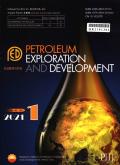Natural gas types and coal-rock gas classification in the whole petroleum system of coal measures
IF 8
Q1 ENERGY & FUELS
引用次数: 0
Abstract
There are various types of natural gas resources in coal measures, making them major targets for natural gas exploration and development in China. In view of the particularity of the whole petroleum system of coal measures and the reservoir-forming evolution of natural gas in coal, this study reveals the formation, enrichment characteristics and distribution laws of coal-rock gas by systematically reviewing the main types and geological characteristics of natural gas in the whole petroleum system of coal measures. First, natural gas in the whole petroleum system of coal measures is divided into two types, conventional gas and unconventional gas, according to its occurrence characteristics and accumulation mechanism, and into six types, distal detrital rock gas, special rock gas, distal/proximal tight sandstone gas, inner-source tight sandstone gas, shale gas, and coal-rock gas, according to its source and reservoir lithology. The natural gas present in coal-rock reservoirs is collectively referred to as coal-rock gas. Existing data indicate significant differences in the geological characteristics of coal-rock gas exploration and development between shallow and deep layers in the same area, with the transition depth boundary generally 1 500–2 000 m. Based on the current understanding of coal-rock gas and respecting the historical usage conventions of coalbed methane terminology, coal-rock gas can be divided into deep coal-rock gas and shallow coalbed methane according to burial depth. Second, according to the research concept of “full-process reservoir formation” in the theory of the whole petroleum system of coal measures, based on the formation and evolution of typical coal-rock gas reservoirs, coal-rock gas is further divided into four types: primary coal-rock gas, regenerated coal-rock gas, residual coal-rock gas, and bio coal-rock gas. The first two belong to deep coal-rock gas, while the latter two belong to shallow coal-rock gas. Third, research on the coal-rock gas reservoir formation and evolution shows that shallow coal-rock gas is mainly residual coal-rock gas or bio coal-rock gas formed after geological transformation of primary coal-rock gas, with the reservoir characteristics such as low reservoir pressure, low gas saturation, adsorbed gas in dominance, and gas production by drainage and depressurization, while deep coal-rock gas is mainly primary coal-rock gas and regenerated coal-rock gas, with the reservoir characteristics such as high reservoir pressure, high gas saturation, abundant free gas, and no or little water. In particular, the primary coal-rock gas is wide in distribution, large in resource quantity, and good in reservoir quality, making it the most favorable type of coal-rock gas for exploration and development.
煤系全油气系统中的天然气类型及煤岩气分类
煤系天然气资源种类繁多,是中国天然气勘探开发的主要目标。针对煤系全含油气系统的特殊性和煤中天然气成藏演化,通过系统梳理煤系全含油气系统天然气的主要类型和地质特征,揭示煤岩气的形成、富集特征和分布规律。首先,将整个煤系油气系统中的天然气按其赋存特征和成藏机理划分为常规气和非常规气两类,按其源储岩性划分为远端碎屑岩气、特殊岩气、远端/近端致密砂岩气、内源致密砂岩气、页岩气和煤岩气6类。煤岩储层中的天然气统称为煤岩气。现有资料表明,同一地区浅、深层煤岩天然气勘探开发地质特征差异显著,过渡深度边界一般为1 500 ~ 2 000 m。根据目前对煤岩气的认识,并尊重煤层气术语的历史使用惯例,按埋深可将煤岩气分为深部煤岩气和浅层煤层气。其次,根据煤系全含油气系统理论中“全过程成藏”的研究概念,在典型煤岩气藏形成演化的基础上,将煤岩气进一步划分为原生煤岩气、再生煤岩气、残余煤岩气和生物煤岩气四种类型。前2种属于深部煤岩气,后2种属于浅层煤岩气。③煤岩气成藏演化研究表明,浅层煤岩气主要为原生煤岩气经地质改造后形成的残余煤岩气或生物煤岩气,具有低储层压力、低含气饱和度、以吸附气为主、排水降压产气等储层特征,深层煤岩气主要为原生煤岩气和再生煤岩气;具有储层压力高、含气饱和度高、游离气丰富、无水或少水等储层特点。特别是原生煤岩气分布广、资源量大、储层质量好,是勘探开发最有利的煤岩气类型。
本文章由计算机程序翻译,如有差异,请以英文原文为准。
求助全文
约1分钟内获得全文
求助全文

 求助内容:
求助内容: 应助结果提醒方式:
应助结果提醒方式:


